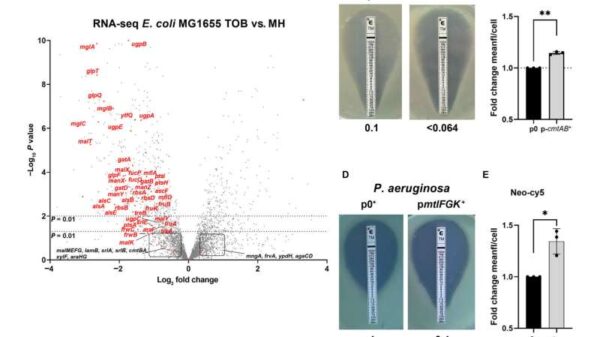Research from the University of Notre Dame has unveiled how analyzing social media sentiment can significantly enhance predictions regarding human displacement during crises. The study, co-authored by researcher Helge-Johannes Marahrens, indicates that monitoring social media posts can aid humanitarian organizations in delivering timely assistance to those in need.
Forced displacement has reached alarming levels globally. According to the United Nations, the number of displaced individuals has nearly doubled over the past decade, with one in 67 people fleeing their homes in 2024 alone. This escalating crisis demands innovative approaches to improve humanitarian responses.
Harnessing Social Media for Humanitarian Responses
The findings were published in the journal EPJ Data Science and are based on an analysis of nearly 2 million social media posts across three case studies: the conflict in Ukraine, the civil war in Sudan, and the economic turmoil in Venezuela. In Ukraine, over 10.6 million people were displaced following Russia’s invasion in 2022. In Sudan, approximately 12.8 million people have been affected since April 2023, and around 7 million individuals have fled Venezuela due to ongoing economic crises.
Marahrens emphasized the limitations of traditional data collection methods during crises, noting that surveys can be challenging to implement. He stated, “As early warning systems evolve, artificial intelligence and new digital data can help improve them. Ultimately, this can help strengthen humanitarian responses, saving lives and reducing suffering.”
The research highlights that sentiment analysis—classifying posts as positive, negative, or neutral—proves to be a more reliable predictor of imminent movement compared to emotional analysis, which categorizes posts by feelings such as joy or fear. This approach allows for better forecasting of timing and volume of cross-border movements.
Advancing Predictive Models for Displacement
By employing pretrained language models that utilize deep learning, researchers found these AI tools to be particularly effective in providing early warnings during conflicts. Marahrens noted, “Our findings will help researchers refine models to predict how people move during conflict or disasters.”
While sentiment analysis shows promise, it is more effective in conflict scenarios like Ukraine and less so in slower-evolving economic crises such as those in Venezuela. Marahrens cautioned that social media analyses can sometimes lead to false alarms and should be used as an initial trigger for further investigation, ideally combined with traditional data sources such as economic indicators and on-the-ground reports.
Looking ahead, Marahrens suggests that future research could delve deeper into the relationship between sentiment and emotion and explore how automated translation services might enable the analysis of more diverse languages. Additionally, incorporating data from various social media platforms could enhance the effectiveness of these predictive tools.
Marahrens, who joined the University of Notre Dame in the fall of 2025, focuses on globalization and inequality issues, leveraging his computational social science expertise across multiple research projects. He is affiliated with the Keough School’s Pulte Institute for Global Development and the Lucy Family Institute for Data & Society.
This innovative research underscores the potential for leveraging social media in humanitarian aid, offering a new avenue for enhancing the effectiveness of responses during crises. By harnessing modern technology, humanitarian organizations can be better equipped to assist those displaced by conflict and disaster.




































































